Quick Summary: The ideal mirror size over a dresser is typically 2/3 the width of the dresser. It should be proportionate, leaving a few inches of dresser visible on each side, and hung at eye level for comfortable viewing. This guide breaks down how to find the perfect fit for your space.
Choosing the right mirror size for your dresser can feel like a puzzle. Too small, and it looks lost. Too big, and it overwhelms the space. You want a mirror that’s both functional and stylish, a focal point that enhances your bedroom’s charm without causing headaches. Don’t worry, finding that perfect balance is easier than you think! We’ll walk through simple steps and helpful tips to make sure your mirror and dresser look like they were made for each other.
Why Mirror Size Over Dresser Matters
The mirror above your dresser isn’t just for checking your reflection; it’s a key design element. The right-sized mirror can:
- Balance the Space: A well-proportioned mirror visually anchors your dresser, making the entire wall feel more complete and harmonious.
- Add Light and Depth: Mirrors reflect light, making your room feel brighter and more spacious.
- Enhance Style: A beautifully framed mirror can add personality, texture, and a touch of elegance or modern flair to your bedroom decor.
- Increase Functionality: It makes your dresser area a more useful spot for getting ready in the morning.
An improperly sized mirror can throw off the entire aesthetic of your bedroom. It might make your dresser look stubby or, conversely, make the mirror seem like an afterthought. Getting the size just right creates a cohesive and pleasing look that you’ll love waking up to every day.
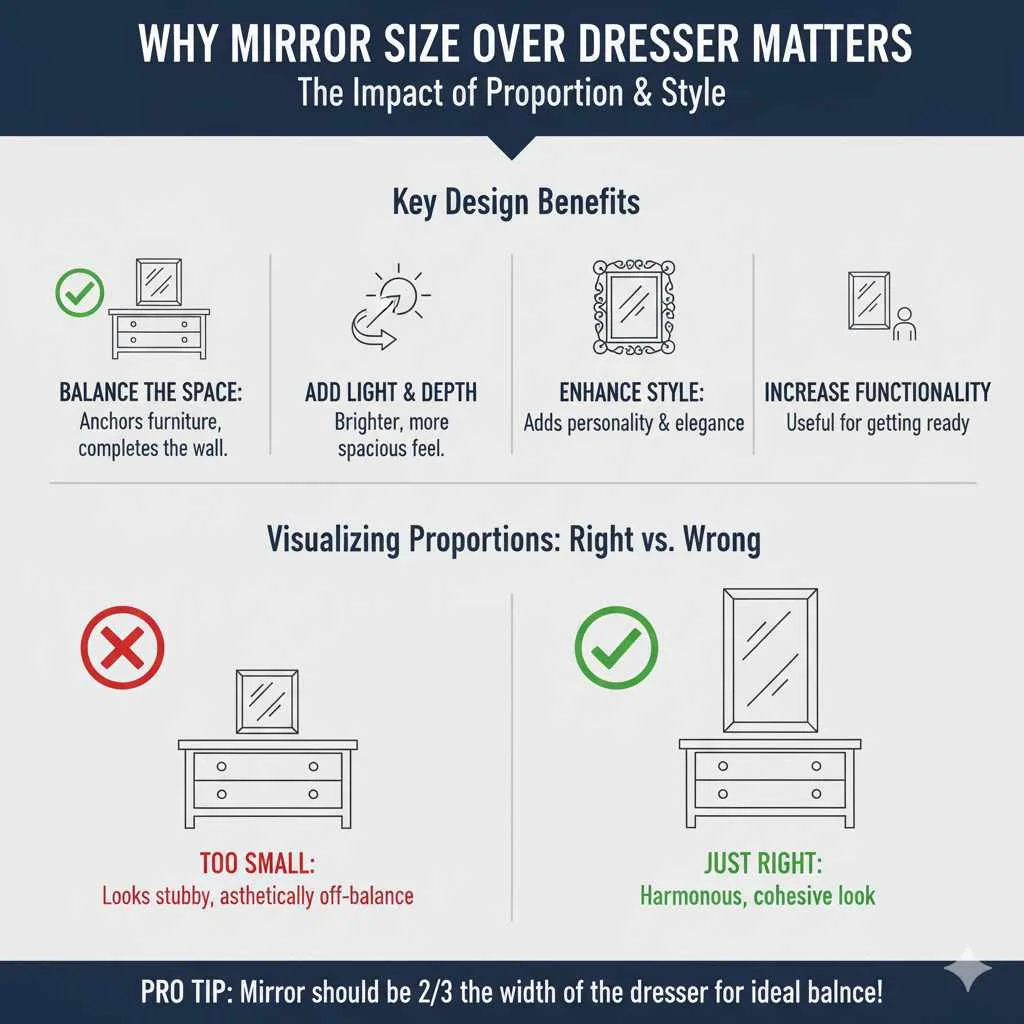
The Golden Rule: The 2/3 Width Guideline
The most common and effective rule of thumb for selecting a mirror size to hang over a dresser is to aim for a mirror that is approximately two-thirds (2/3) the width of the dresser. This guideline ensures the mirror is substantial enough to have an impact without overpowering the dresser itself.
For example, if your dresser is 60 inches wide, a good starting point for your mirror’s width would be around 40 inches (60 inches 2/3 = 40 inches).
How to Measure and Calculate
Let’s break down how to apply this rule:
- Measure Your Dresser: Use a tape measure to find the exact width of your dresser from one outer edge to the other. Don’t forget to include any decorative molding or frame edges.
- Calculate 2/3 of the Width: Multiply the dresser’s width by 0.667 (or simply divide by 3 and multiply by 2). This gives you your target mirror width.
- Consider the Height: While width is primary, height is also important. The mirror should visually connect with the dresser. Typically, the mirror’s bottom edge should hang a few inches above the dresser top, and its top edge shouldn’t reach the ceiling or feel too high. A common height range is 28-36 inches, but this can vary significantly with room height and dresser proportions.
Pro Tip: Don’t have a calculator handy? Measure the dresser width, then measure that width again. Divide that total length by three. The result is roughly one-third of the dresser width. So, your mirror should be approximately the dresser width minus one-third of its width. For a 60-inch dresser: 60 inches – 20 inches (1/3 of 60) = 40 inches wide.
Beyond the 2/3 Rule: Factors to Consider
While the 2/3 rule is a fantastic starting point, other factors can influence your final decision. It’s about creating a balanced and aesthetically pleasing composition in your bedroom.
1. Dresser Style and Proportions
The style of your dresser plays a role. A very minimalist, sleek dresser might accommodate a slightly wider or narrower mirror than a heavily ornate one. A tall, narrow dresser might need a proportionally taller, narrower mirror, while a long, low dresser might benefit from a wider, perhaps even a leaner, mirror.
Consider the visual weight of your dresser. If it’s a very substantial piece, a larger mirror will help it feel more balanced. If it’s more delicate, a slightly smaller mirror might be better.
2. Room Size and Wall Space
In a large bedroom with high ceilings and plenty of wall space, you can afford to go a bit bolder with a larger mirror. Conversely, in a smaller room or a room with a low ceiling, a mirror that is too large can make the space feel cramped. You want the mirror to enhance the room, not dominate it.
Imagine your dresser wall as a canvas. The mirror and the dresser should occupy a pleasing portion of that canvas, leaving enough breathing room around them.
3. Mirror Shape and Frame
The shape of your mirror (round, rectangular, oval, arched) and the style of its frame will also affect how it looks and feels above the dresser.
- Round or Oval Mirrors: These can soften the hard lines of a dresser and add a touch of gentle elegance. A round mirror’s diameter will often be a bit smaller than the 2/3 rule would suggest for a rectangle, perhaps closer to half the dresser’s width, to maintain balance.
- Rectangular or Square Mirrors: These provide a more modern, structured look and often fit the 2/3 rule perfectly.
- Arched Mirrors: These can add architectural interest and a traditional or transitional feel.
- Frames: A thick, ornate frame will naturally take up more visual space than a thin, minimalist one. A chunky frame might mean you need a mirror that’s slightly less than the 2/3 width to avoid feeling too busy.
4. Functionality and Personal Preference
What will you primarily use the mirror for?
- Getting Ready: If you use the mirror extensively for applying makeup or styling hair, you’ll want something wide enough to see yourself clearly.
- Decorative Accent: If the mirror is more about aesthetics, you have a bit more flexibility.
Ultimately, your personal preference is paramount. The rules are guidelines, and if you fall in love with a mirror that’s slightly outside the typical proportions but feels right to you, go for it!
Visualizing the Perfect Fit: Mock-Up Tips
Before you buy, it’s smart to visualize how your chosen mirror will look. Here are a few easy ways to do this:
1. Use Painter’s Tape
This is a simple, effective trick. Use painter’s tape (which is easily removable) to create the outline of the mirror’s dimensions on your wall above the dresser. This gives you a tangible sense of the mirror’s size and placement.
Steps:
- Measure the width and height of the mirror you are considering.
- Using painter’s tape, mark a rectangle or shape on the wall corresponding to those dimensions. Leave a comfortable gap of 3-6 inches between the top of the dresser and the bottom of your taped mirror outline.
- Step back and look. Does it feel proportionate? Does it fill the space adequately but not too much?
2. Newspaper or Kraft Paper Template
For a more substantial mock-up, cut out the mirror’s dimensions from newspaper or kraft paper. You can then tape this paper template to the wall. This gives you a better feel for the visual weight of the mirror.
3. Look at Inspiration Photos
Browse interior design magazines or Pinterest for bedrooms with dressers similar to yours. Pay attention to the mirrors used and how they are scaled. This can provide great visual cues.
Hanging Height: Eye-Level is Key
Once you’ve chosen the perfect size, how high should you hang it? The general rule is to orient the mirror around eye level. This ensures comfort and functionality for most people in the household.
General Guidelines for Hanging Height
- Bottom of the Mirror: Start by placing the bottom edge of the mirror approximately 3 to 6 inches above the top surface of the dresser. This creates a visual connection without making it feel like the mirror is floating too far away or sitting directly on top.
- Center of the Mirror: Ideally, the center of the mirror should be at around 57-60 inches from the floor. This is a standard eye level for many adults.
- Top of the Mirror: Ensure the top of the mirror doesn’t hit the ceiling or feel uncomfortably high. In rooms with standard 8-foot ceilings, the top of the mirror might be around 70-76 inches from the floor.
Adjustments for Room and User Height
- High Ceilings: If you have very high ceilings, you can afford to hang the mirror higher. You might bring the bottom edge up to 8-10 inches above the dresser, and the entire mirror will sit higher on the wall.
- Lower Ceilings: For lower ceilings, keep the mirror closer to the dresser (3-5 inches above) and ensure the top doesn’t get too close to the ceiling.
- Primary User Height: If one person in the household is significantly taller or shorter than average, consider their eye level when determining the ideal hanging height for their primary use.
Choosing the Right Mirror for Different Dresser Widths: A Table Guide
To make things even easier, here’s a guide with some common dresser widths and recommended mirror sizes. Remember, these are starting points – always consider your specific dresser and room!
| Dresser Width (Inches) | Recommended Mirror Width (Inches) | Notes & Considerations |
|---|---|---|
| 30″ (Small) | 18″ – 24″ | A round mirror in this diameter range often works well. Ensure it doesn’t feel too small. |
| 36″ (Standard) | 24″ – 30″ | The 2/3 rule is a great guideline here. |
| 48″ (Wide) | 30″ – 36″ | Consider a mirror that follows the 2/3 rule. A slightly wider mirror might also work if the frame is slim. |
| 60″ (Large) | 36″ – 42″ | This is where the 2/3 rule (40″) is a strong recommendation. |
| 72″ (Extra Wide) | 45″ – 50″ | You have more flexibility here. A mirror closer to 60-70% of the width can work well. Consider two smaller, coordinating mirrors if one large one feels too overwhelming. |
This table offers concrete examples to help you visualize. For instance, if you have a 60-inch wide dresser, aim for a mirror that’s around 40 inches wide. This provides a balanced and beautiful look.
Mirror Installation: A Quick Overview
Once you have the perfect mirror, you’ll need to hang it securely. For most decorative mirrors, especially those not intended for heavy-duty safety in a bathroom, basic hardware is sufficient. However, it’s always crucial to use appropriate anchors for your wall type (drywall, plaster, etc.).
Essential Tools and Hardware
- The Mirror: Of course!
- Measuring Tape: For accurate placement.
- Level: To ensure your mirror hangs straight.
- Pencil: To mark the wall.
- Stud Finder: Highly recommended for secure mounting. Hanging heavy items directly into wall studs is the safest method. You can learn more about locating studs from resources like This Old House.
- Drill and Drill Bits: For creating pilot holes or fitting anchors.
- Appropriate Wall Anchors and Screws: Choose heavy-duty anchors if you can’t hit a stud. Toggle bolts or molly bolts are good options for drywall.
- Mirror Hanging Hardware: Many mirrors come with D-rings or wire attached. You might need to purchase separate hanging hardware like D-ring hangers, picture wire, or French cleats for larger, heavier mirrors.
Basic Hanging Steps
- Determine Wall Hooks/Anchor Points: Measure the distance between the hanging points on your mirror (D-rings, wire, etc.). Transfer these measurements to the wall, ensuring they are level and at your desired height. Ideally, try to align at least one hook with a wall stud using a stud finder.
- Install Anchors/Hooks: Drill pilot holes and install your chosen anchors or screw in your hooks/mounting brackets directly into studs.
- Attach Mirror: Carefully lift the mirror and hang it on the installed hardware.
- Check Level: Place your level on top of the mirror to ensure it’s perfectly straight. Adjust as needed.
Safety First: Always check the weight capacity of your chosen hardware and anchors. If your mirror is very large or heavy, consider professional installation or heavy-duty mounting systems like French cleats. For a comprehensive guide on safe wall hanging, check out resources that explain weight considerations for different wall types.
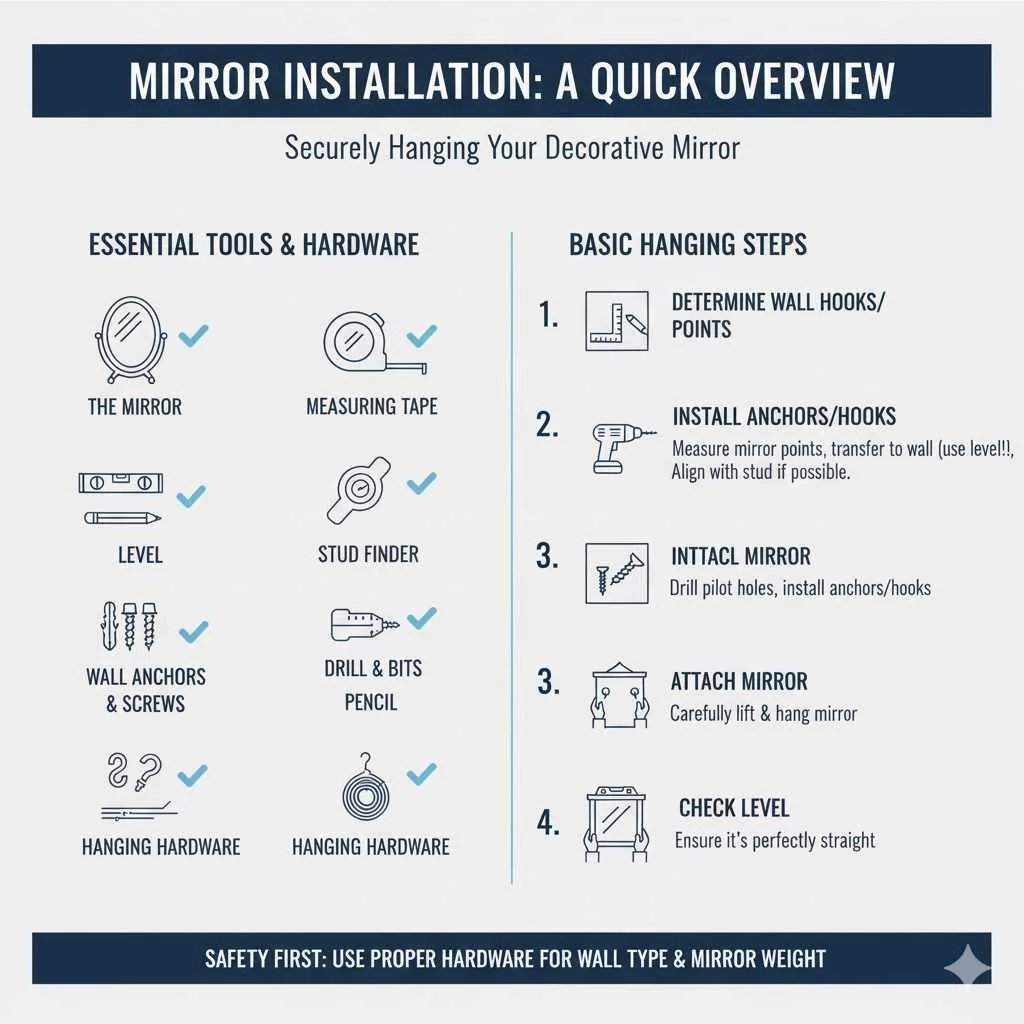
FAQs about Mirror Size Over Dresser
Q1: Can I use a mirror that is the same width as my dresser?
A: While you can, it’s generally not recommended. A mirror that is the same width as the dresser can make both pieces look too blocky and can overwhelm the dresser. The 2/3 rule helps create visual breathing room and a more balanced composition.
Q2: What if my dresser is unusually shaped or has a large top frame?
A: For unusually shaped dressers or those with significant top overhang, measure the functional* width that you want the mirror to relate to. You might still use the 2/3 rule based on the main body of the dresser, or adjust based on how much of the top surface is actually available and visible.
Q3: Should the mirror be longer than it is wide, or vice versa?
A: The orientation of the mirror (rectangular, square, oval) greatly influences this. For rectangular mirrors, you’ll typically choose one that is about 2/3 the width of the dresser. The height will then be determined by preference and room proportions, aiming to fill the vertical space pleasingly without being too high or too low.
Q4: What is the best mirror shape to use over a dresser?
A: Rectangular or oval mirrors are most common for dressers as they complement the furniture’s lines. Round mirrors can add a softer touch, and arched mirrors can offer a more decorative, traditional feel. The best shape often depends on your overall bedroom style.
Q5: My dresser is very low and long. What size mirror works best?
A: For a low, long dresser, you have a few options. A wide rectangular mirror that follows the 2/3 rule can work, but a taller, leaner mirror might also create a nice vertical balance. Alternatively, consider placing two smaller, coordinating mirrors side-by-side over the dresser for a layered look.
Q6: How much space should be between the dresser and the mirror?
A: A good rule of thumb is to leave about 3 to 6 inches of space between the top of the dresser and the bottom of the mirror. This creates a visual separation that makes both pieces look intentional and balanced.
Conclusion
Finding the right size mirror for your dresser is all about achieving a beautiful balance within your bedroom. By following the 2/3 width guideline, considering your dresser’s style, your room’s dimensions, and your personal preferences, you can confidently select a mirror that enhances your space. Don’t forget to visualize your choices with tape or paper mock-ups and hang it at a comfortable eye level for maximum functionality and aesthetic appeal. With these tips, you’re well on your way to creating a more stylish, inviting, and complete bedroom.

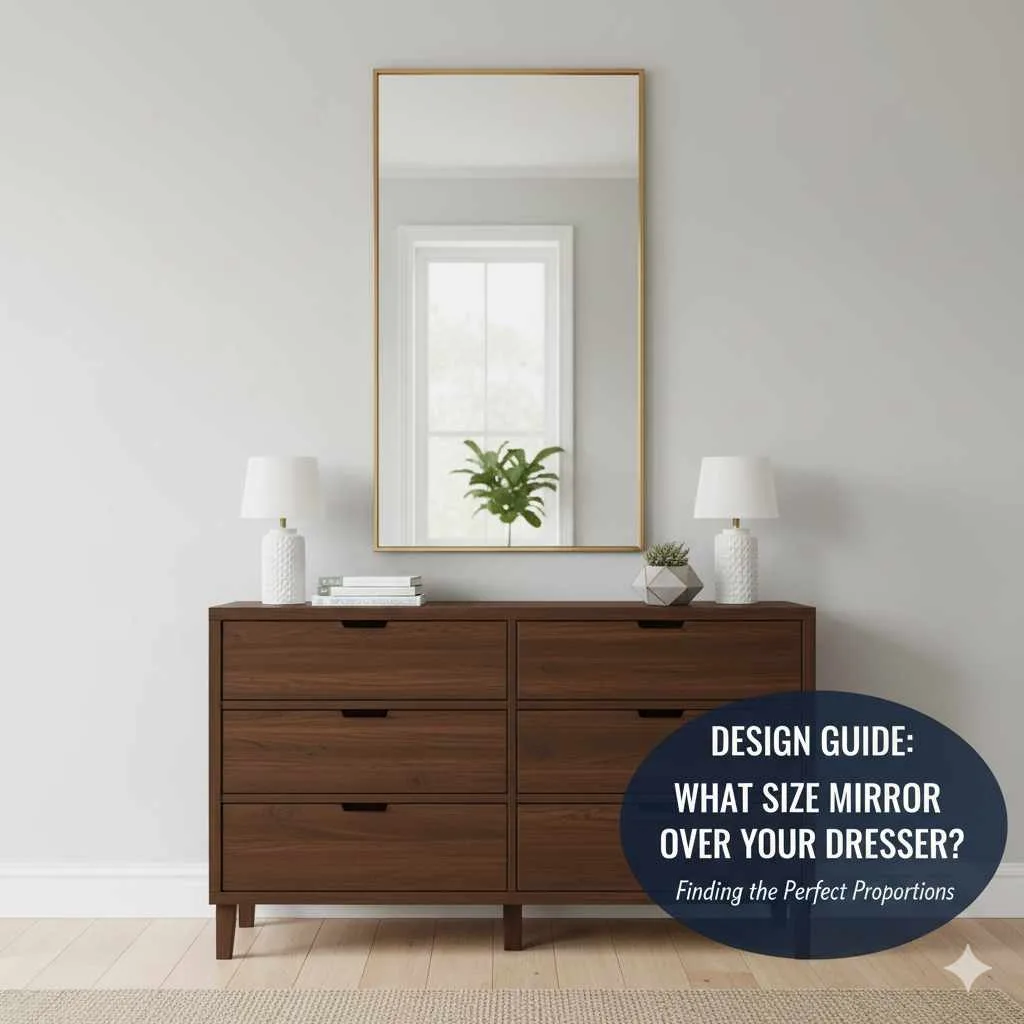

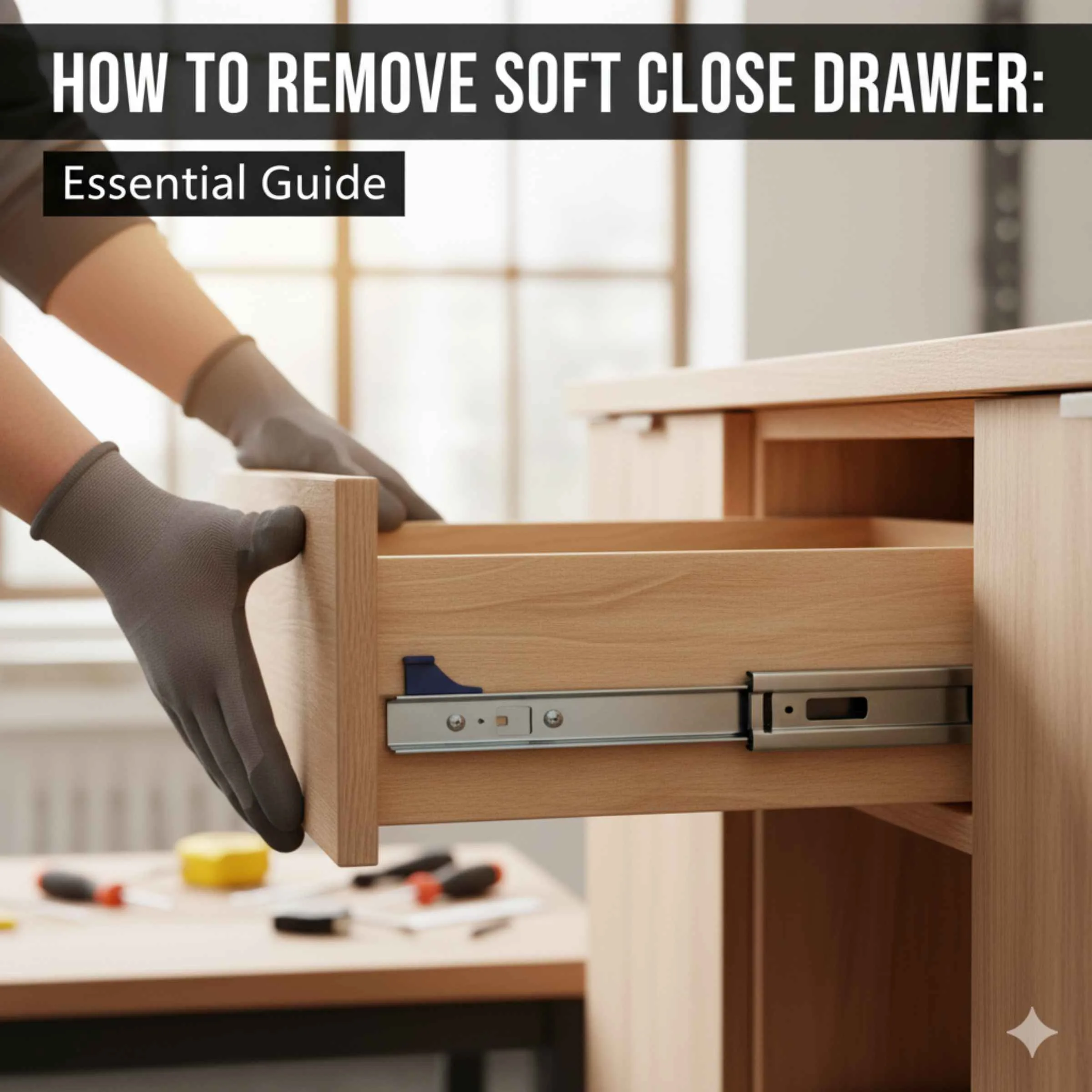



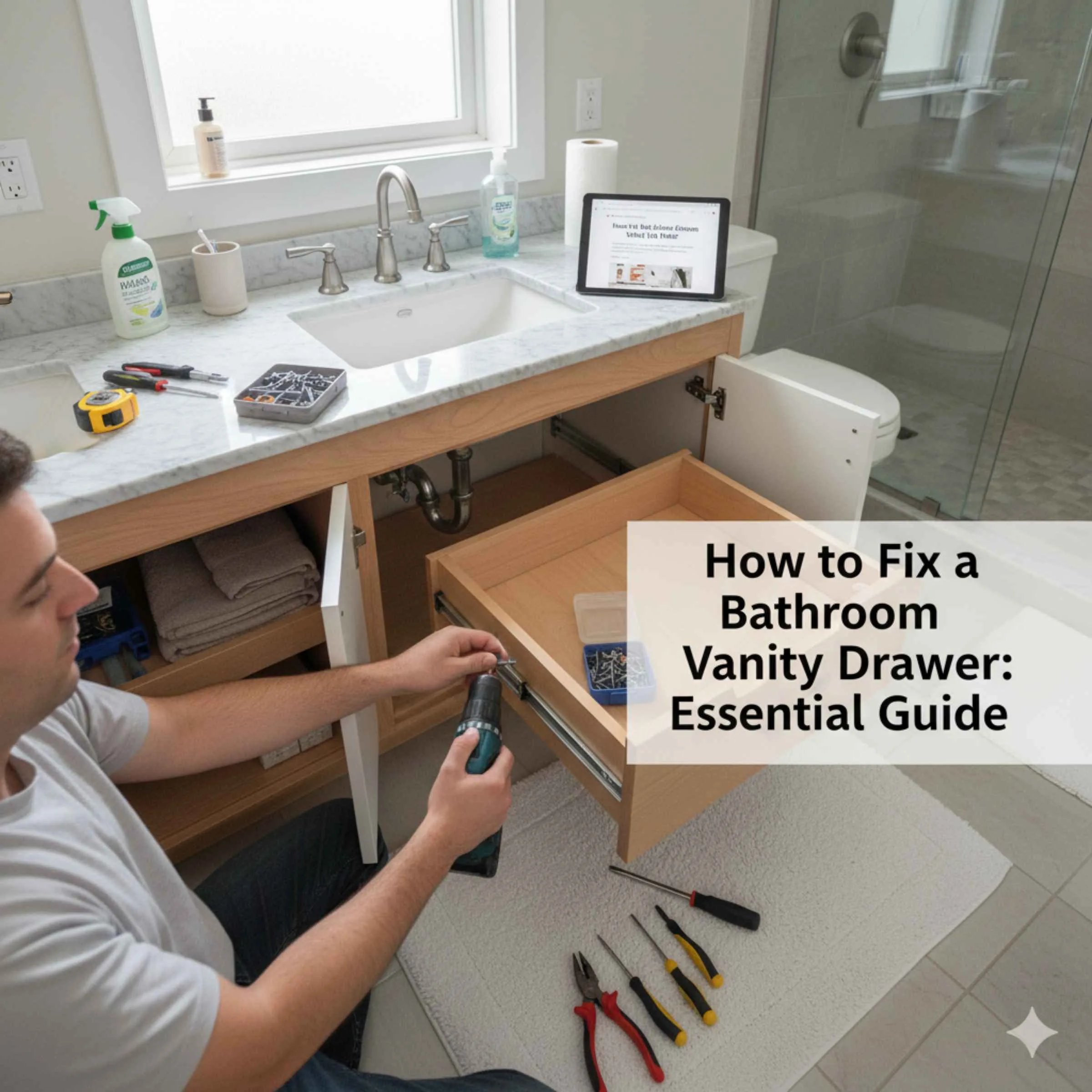
Leave a Reply